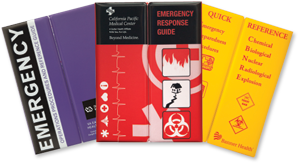Written by: Jim McKay
Since 1999, when nine firefighters never made it out of a fire in a cold storage and warehouse building in Worcester, Mass., firefighters have been hoping for a tracking tool for commanders to keep tabs on personnel fighting fires.
The technology thus far has been limited, in some cases unable to penetrate buildings or other interference. The Department of Homeland Security Science and Technology Directorate (DHS S&T) believes it has finally cracked the code with the Precision Outdoor and Indoor Navigation and Tracking for Emergency Responders (POINTER) technology that it developed in collaboration with NASA.
“To hear that the technology is finally coming about where we have a lot better potential to know where [firefighters] are if they have a problem is outstanding, it’s really important,” said Curt Floyd, technical lead for first responders for the National Fire Protection Association. “If there’s a pending collapse of the building or if they’re having a problem, we can either talk them out or send somebody to help.”
He said POINTER differs from previous technologies that attempted the same purpose because it emits magnetoquasistatic fields, which are very low frequency and able to penetrate all of the structural materials used for buildings to up to about a city block away.
“We are able to use this technology without any of the traditionally inherent problems with the other technologies,” said Greg Price, DHS S&T first responder portfolio director.
Some of the problems with previous technology are line of sight, or with frequencies that bounce off an object. “Think about GPS,” Price said. “As soon as you lose sight of the satellite they start to break down and fail. Some have frequencies that have an effect called multipath; when they see a metal object, they bounce off and their accuracy goes down.”
The technology was tested last month at the Veteran’s Affairs Greater Los Angeles Healthcare System along with Balboa Geolocation, which is partnering with DHS to get the product in the hands of first responders. The testing was the first step prior to operational field testing with fire response agencies across the country this year. It is hoped that the commercial product will be available early next year.
“As a commander, I want to know where my people are so if somebody has an issue or they get low on air and aren’t sure where they are, I can have somebody redeploy and help those people,” Floyd said. “The only way I can do that is if I know where everyone is.”
Another huge breakthrough for this technology is cost, which Price said will be available for “hundreds and not thousands” of dollars.
DHS has assembled a group of about 150 first responders annually for three days for breakout discussions to talk about their concerns and priorities. The Responders Resource Group consists of law enforcement, emergency medical, emergency management and fire departments who discuss what’s needed to help them do their jobs more efficiently and safely. The top requirement and priority from the group has consistently been the ability to locate and track human resources and assets when they go inside of a building or dangerous environment.
“We’ve been testing in a number of different facilities for the past couple of years and have had great success,” Price said. The California Institute of Technology is partnering with Balboa Geolocation to help get the technology to market.
Price said the first release will be for firefighters. It will consist of a receiver, which is about the size of an iPhone 11 right now but will inevitably become smaller. Each of these devices will be worn by a first responder. There will be two or three transmitters, which emit the magnetoquasistatic fields and can be mounted on a truck and deployed automatically or in a carry bag and placed inside a building to begin location and tracking.
The third piece of the technology is the visual display, which Price calls the most important piece because if it’s not easy to use, it will not be an effective tool. “From the beginning we’ve been working with first responders in the development of not only the receivers and transmitters but the user interface,” he said. “We simplified it to the point that it’s very usable for first responders.”
This article appeared on Emergency Management News and is shared with consent: https://www.govtech.com/em/safety/Has-DHS-Cracked-the-Code-for-Accurate-Location-Tech.html







